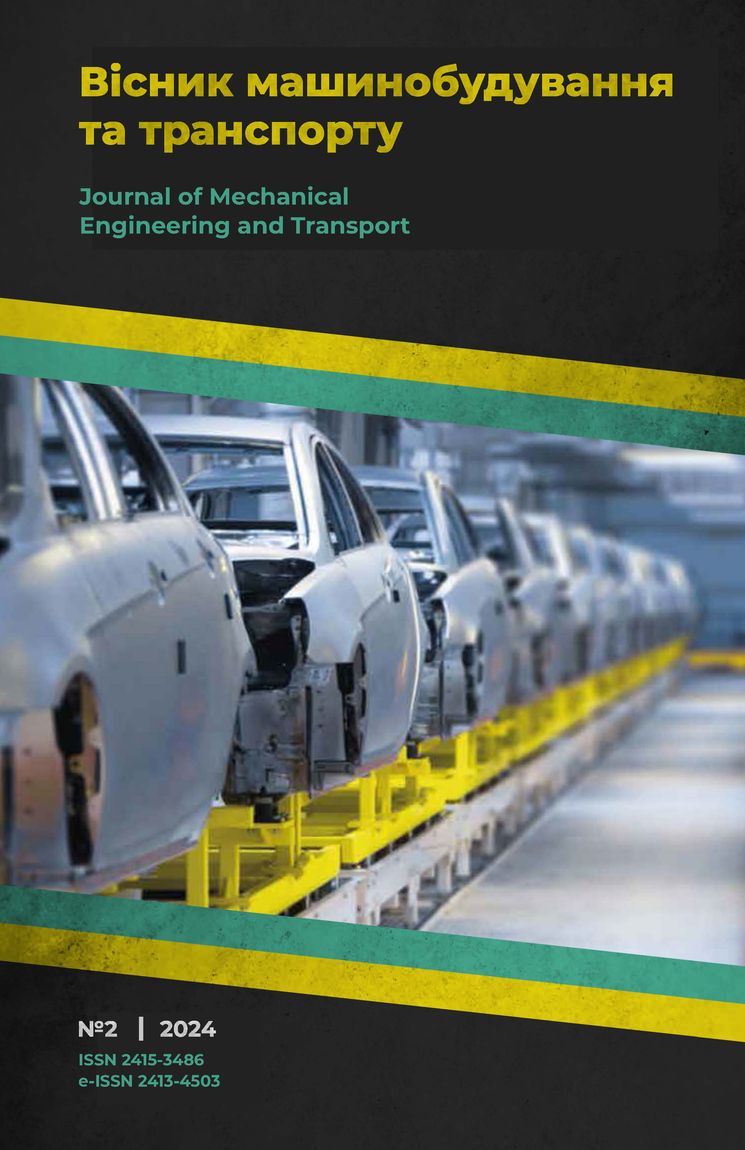Spectral evaluation of vibration loadslight military vehicle
DOI:
https://doi.org/10.63341/vjmet/2.2024.31Keywords:
vibro-oscillating loads, light military vehicle, sprung mass, running smoothness, rms vibration acceleration, suspension system, spectral analysisAbstract
An analysis of the conditions for the use of light military vehicles during hostilities was carried out. Taking into account the intensity of use of military vehicles at the front, in particular the increase in operating speeds and the operation of samples at the limit of their technical capabilities in off-road conditions and with the aim of reducing vibration loads on the driver, crew, structural elements of the military vehicle and cargo, it is proposed as an option to get out of the situation on modern samples use long-travel suspensions. Based on the analysis of previously conducted studies, the frequency limits of the sensitivity of the human body in the vertical and horizontal directions have been established. A simulation model of suspension operation in off-road conditions was developed to evaluate the smoothness of movement of the “Mamai” light military vehicle and the spectral evaluation of vibration loads on the driver and crew. In the future, the vibration load on the driver was determined, and after comparing them with the results of the conducted experimental study, the comparability of the results and the adequacy of the simulation model were assessed. The difference in the amplitudes of vertical accelerations at the driver’s workplace during the experiment and computer simulation did not exceed 12-15%. To compare experimental data and data obtained through simulation modelling with regulated standards, sanitary norms and values. with the means of the Matlab mathematical processor, the rms values of the vibration accelerations in the octave bands were directly determined, for which a corresponding program was developed, since the built-in poctave function of the Matlab environment does not allow the analysis for frequencies below 3 Hz
References
Hrubel, M.G., Kraynyk, L.V., & Andrienko, A.M. (2020). Fundamentals of the formation of a national regulatory framework for the cross-country ability of wheeled military automotive equipment. Systems of Arms and Military Equipment, 2(62), 10-21. doi: 10.30748/soivt.2020.62.01.
Manzyak, M.O., Kraynyk, L.V., & Hrubel, M.G. (2021). Trends in the development of suspension structures of military vehicles. Systems of Arms and Military Equipment, 1(65), 27-35. doi: 10.30748/soivt.2021.65.04.
Duschenko, V.V., & Nanivskyi, R.A. (2024). Development of suspension systems and their potential in improving the tactical and technical characteristics of combat armored vehicles. Military-Technical Collection, 31, 8-20. doi: 10.33577/2312-4458.31.2024.8-20.
Kosharny, M.F. (1992). Fundamentals of mechanics and power engineering of a vehicle. Kyiv: Higher School.
Bilichenko, V.V., Dobrovolsky, O.L., Smirnov, E.V., & Ognevy, V.O. (2017). Cars. Work processes and calculation principles. Design of a car suspension. Vinnytsia: VNTU.
DSTU 2947-94. (1996). Motor vehicles. Car suspensions. Terms and definitions. Retrieved from https://national_ standards_ukr.academic.ru/19651/%D0%94%D0%A1%D0%A2%D0%A3_2947-94 .
Raimpel, V., Stoll, H., & Betzler, J. (1983). The automotive chassis: Engineering principles. Oxford: Butterworth- Heinemann.
Buryan, M.V. (2020). Smoothness of bus movement in relation to the characteristics of the suspension and seats: dissertation. (Doctoral dissertation, Lviv Polytechnic National University, Lviv, Ukraine).
DSTU - ISO 2631-1:2004. (2004). Mechanical vibration and shock. Assessment of the impact of general vibration on humans. Retrieved from https://online.budstandart.com/ua/catalog/doc-page?id_doc=53306.
Manziak, М., Khoma, В., Hrubel, М., Krainyk, Л., & Salo, Я. (2024). Evaluation of the off-road suspension efficiency for all-wheel-drive vehicles. Bulletin of Lviv National Environmental University. Series Agroengineering Research, 27, 96-100. doi: 10.31734/agroengineering2023.27.096.
Manzyak, M.O. et al. (2024). Experimental study of the evaluation of the effectiveness of automobile suspensions in off-road conditions and the mobility of vehicles moving off-road under the condition of achieving maximum permissible vibration loads on the crew. Lviv: NASV.
Manzyak, M.O., & Kraynyk, T.L. (2024). Assessment of the adequacy of modeling the operation of suspensions of samples of wheeled military automotive equipment in comparison with experimental test data. Collection of Scientific Papers of the DNDI VS AVT, 4(22), 90-98. doi: 10.37701/dndivsovt.22.2024.11.
Downloads
-
PDF (Українська)
Downloads: 0



